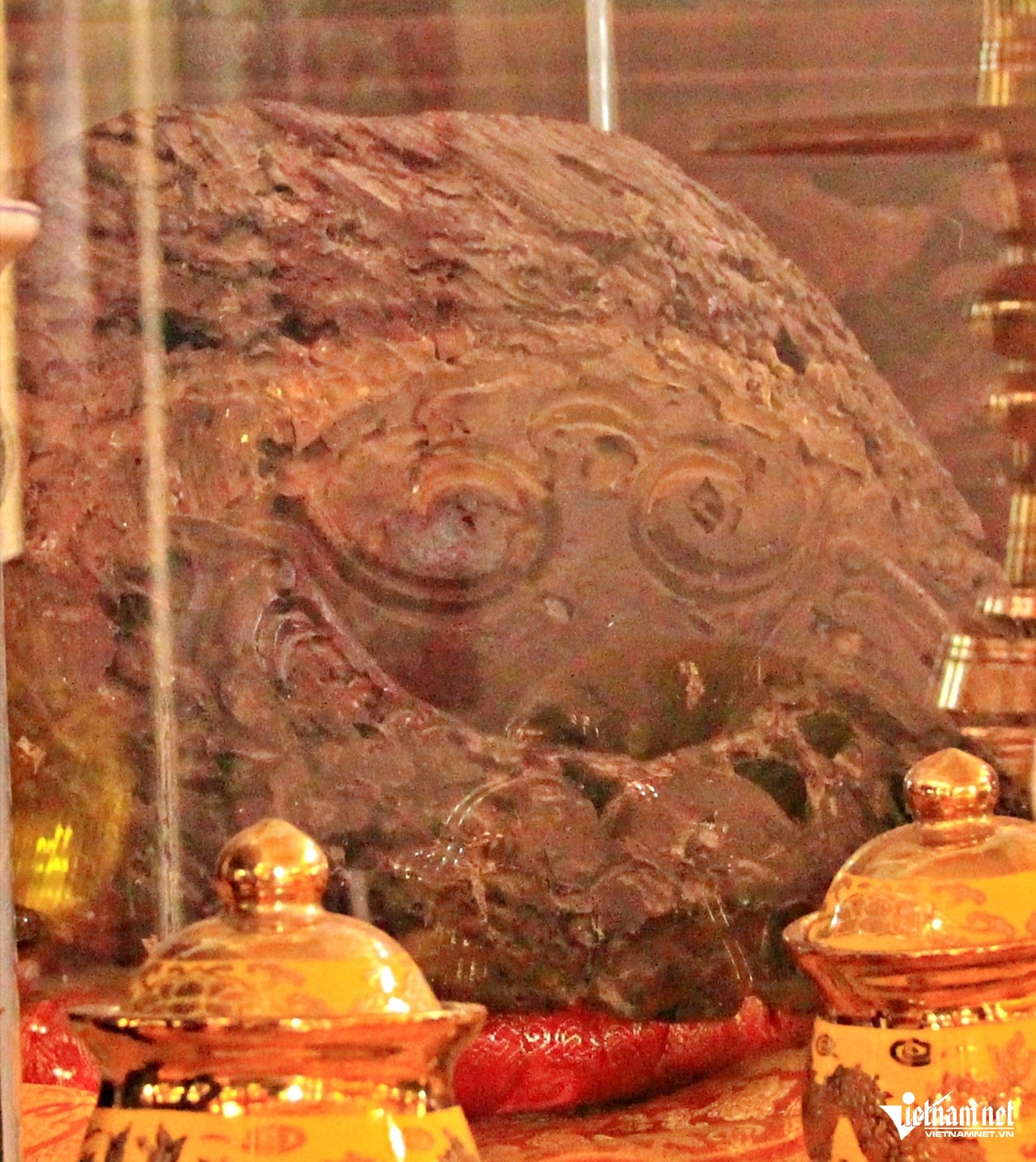
Nestled amidst the lush greenery, Thien Mu Pagoda (Tan Trach Commune, Can Duoc District, Long An Province) is distinguished by its towering 40-meter statue of Bodhisattva Avalokiteshvara, the tallest Buddha statue in Long An Province. The ancient temple attracts numerous visitors and pilgrims daily, drawn by both its majestic presence and the stories of Lord Nguyen Anh before he became the first emperor of the Nguyen Dynasty.
According to historical documents from Tan Trach Commune and records of the pagoda, Thien Mu pagoda was established in 1726. At that time, it was merely a small hermitage with a thatched roof. The pagoda's current abbot explained that the name "Thien Mu" is linked to stories of Lord Nguyen Anh before he ascended to the throne as Emperor Gia Long.

During his journey to Phu Quoc, Lord Nguyen Anh and his soldiers sought refuge at the hermitage in Tan Trach Village (now Tan Trach Commune). The hermitage's abbot warmly welcomed them, and Nguyen Anh received support from Mai Van Hien, the village leader.
Lord Nguyen Anh stayed at the hermitage until he had a strange dream. "Legend has it that one night, while sleeping soundly, Lord Nguyen Anh dreamed of an elderly woman with white hair who urged him to head west. He awoke, feeling anxious, and immediately ordered his troops to leave the hermitage and cross the Vam Co Dong River. Before departing, he promised that if he became king, he would name the hermitage Thien Mu and bestow gifts," the abbot recounted.
"After consolidating his power, Lord Nguyen Anh fulfilled his promise. He declared himself king and conferred the title of Thien Mu Pagoda upon the hermitage, meaning 'Mother of Heaven,' as 'thien' means heaven and 'mu' means mother. The hermitage thus transformed into Thien Mu Pagoda, undergoing several renovations to achieve its current architecture and layout," the abbot explained further.

Nguyen Tan Quoc, Deputy Director of the Long An Department of Culture, Sports, and Tourism, stated that according to legend and the accounts of past abbots, in addition to conferring the name Thien Mu Pagoda, Lord Nguyen Anh also bestowed several artifacts. These included two bronze Buddha statues placed in intricately carved wooden altars, a wooden fish drum, a thunder drum, and two pairs of couplets with acrostics (the first characters of each couplet forming the name of the pagoda).
Lord Nguyen Anh also provided memorial tablets for Mai Van Hien and the hermitage's abbot. Legend has it that during his stay, Lord Nguyen Anh often rested on a wooden bed (referred to as a plank) in the pagoda. After his departure, the pagoda preserved the bed as a memento, considering it a treasure.

Quoc noted that these artifacts were gifted by Lord Nguyen Anh when he was a lord, not yet an emperor, and the first ruler of the Nguyen Dynasty.
"According to inscriptions on the artifacts, they bear the reign title 'Canh Hung Ngu Thap Nien' (1790), which was the year Gia Dinh was established. At that time, Nguyen Anh was a lord, not yet an emperor, and retained the reign title of Canh Hung from Emperor Le Hien Tong," Quoc explained.
Over the past 200 years, some relics gifted by Lord Nguyen have been lost. The wooden plaque with the name Thien Mu Pagoda, conferred by Lord Nguyen, has deteriorated over time and no longer exists, while the original bronze Buddha statues have been replaced.

The wooden bed reportedly used by Lord Nguyen during his stay has also decayed and no longer exists. The memorial tablets of Mai Van Hien and the hermitage's abbot were restored in 2001. Mai Van Hien's tablet is now enshrined at Trach An Temple, located next to the pagoda.
Currently, the pagoda preserves the ancient wooden fish drum and the thunder drum nearly intact. The wooden fish drum, a dark brown color with intricate carvings, is kept in a glass case placed reverently on the altar behind the main hall. Despite careful preservation, signs of wear are evident on the drum after more than 200 years. The thunder drum is displayed on the side of the main hall, placed on a carved wooden stand adorned with intricate dragon motifs.

The abbot explained, "Previously, the drum was much longer. Now, it's shorter because we had to cut off the damaged parts after changing the skin. The drum is no longer used but is displayed as a relic, a treasure. We strive to preserve these relics bestowed by Lord Nguyen."
Ha Nguyen